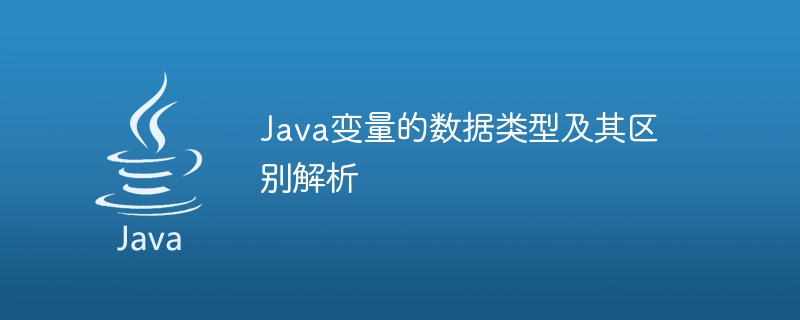

Data types of Java variables and analysis of their differences
In Java programming, data types are a very important concept. The data type defines the type of data that the variable can store and the amount of memory space it occupies. Understanding Java's data types is crucial to using variables correctly and writing efficient code.
Java data types can be divided into two types: basic data types and reference data types. There are 8 basic data types, namely byte, short, int, long, float, double, char and boolean; while reference data types include classes, interfaces and arrays.
Differences in basic data types:
The choice of basic data type depends on the desired numerical range and memory efficiency. Usually, using int and double are the most common choices because their value range and precision can meet most needs.
The difference between reference data types:
Reference data types are composed of classes, interfaces and arrays. They store a reference to the object, not the data of the object itself. Therefore, reference data types occupy relatively large space in memory.
The sample code is as follows:
// 基本数据类型示例
byte myByte = 100;
short myShort = 5000;
int myInt = 100000;
long myLong = 1500000000L;
float myFloat = 3.14f;
double myDouble = 1.23456789;
char myChar = 'A';
boolean myBoolean = true;
// 引用数据类型示例
String myString = "Hello World";
int[] myArray = {1, 2, 3, 4, 5};
List<String> myList = new ArrayList<String>();
myList.add("Apple");
myList.add("Banana");In the sample code, we declare variables of different types and assign corresponding values. Through the types of these variables, we can see the differences between different data types. Primitive data types store numerical values directly, while reference data types store references to data objects.
Summary:
Java has a very rich data type that can meet various programming needs. Understanding the differences between different data types is important for writing efficient code and saving memory space. When choosing a data type, make the right choice based on the desired range of values and memory efficiency.
I hope that through the analysis of this article, you can better understand the data types of Java variables and their differences, and be able to use them correctly in actual programming.
The above is the detailed content of Analyze variables of different data types in Java and their differences. For more information, please follow other related articles on the PHP Chinese website!




